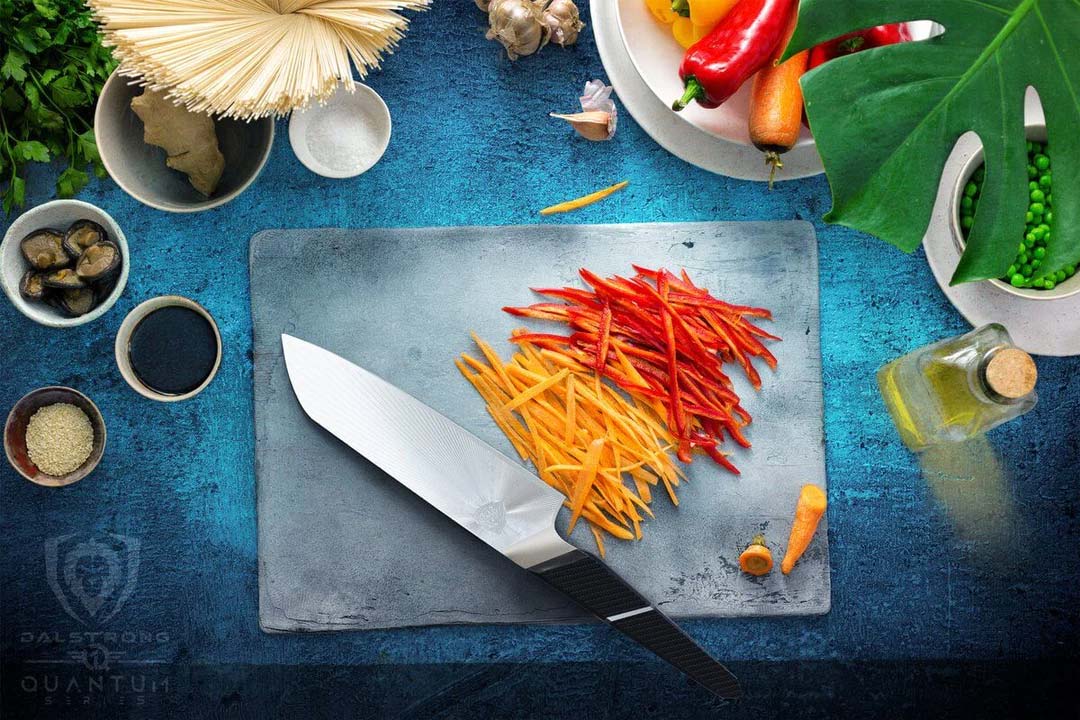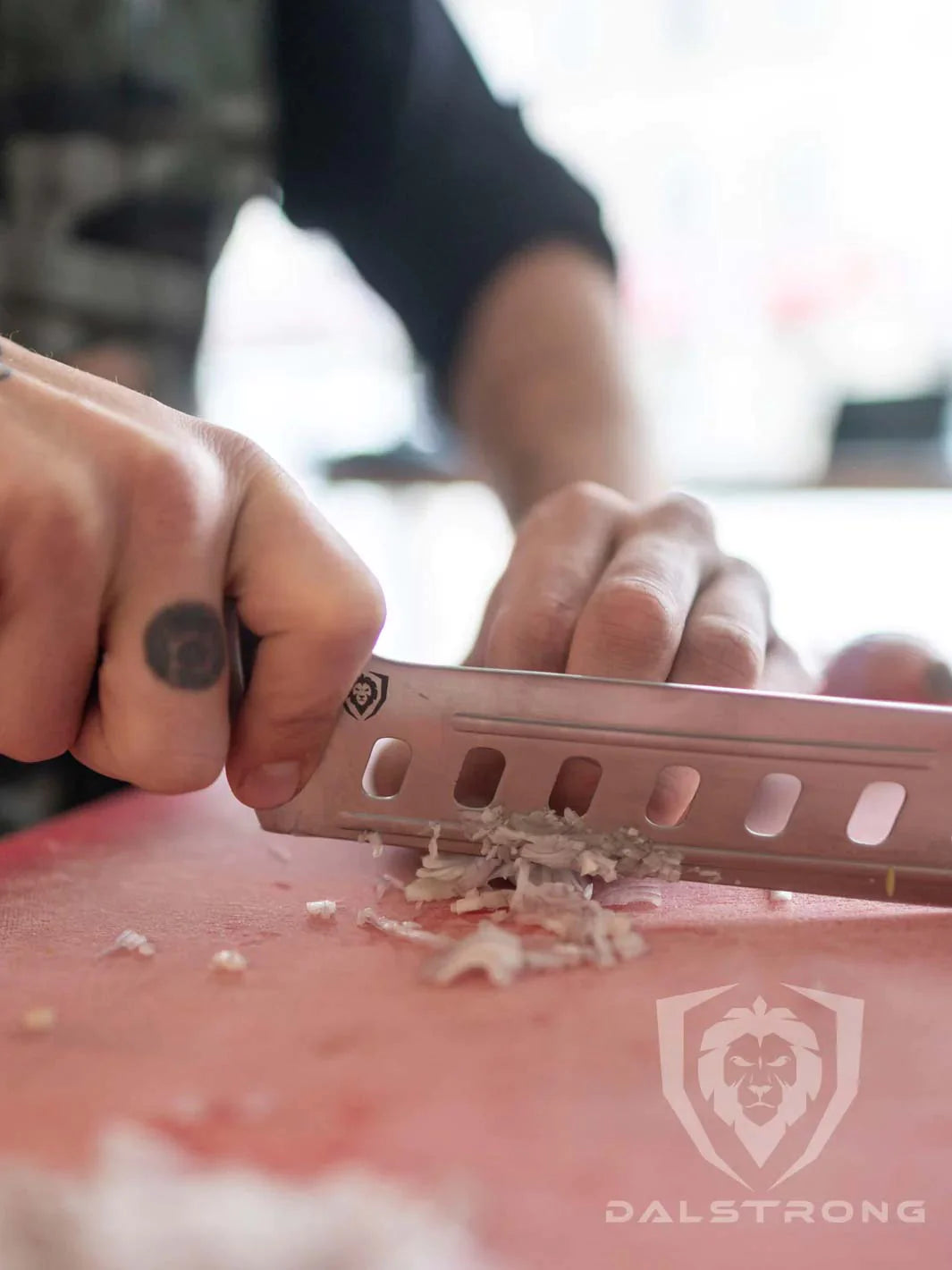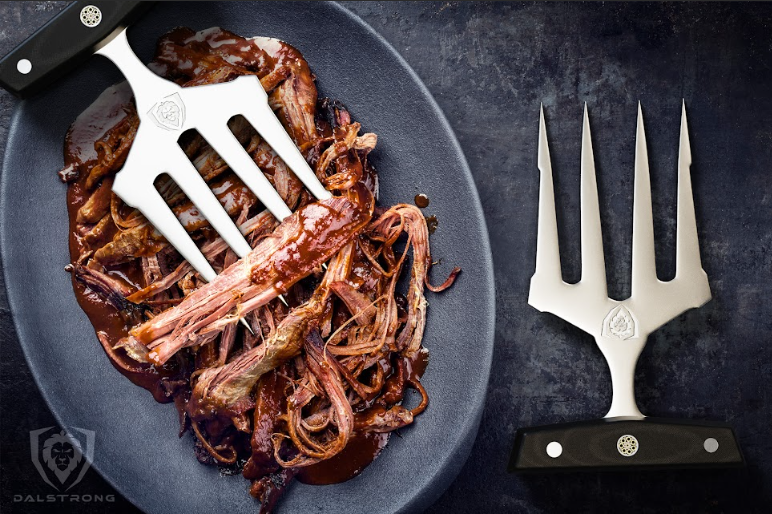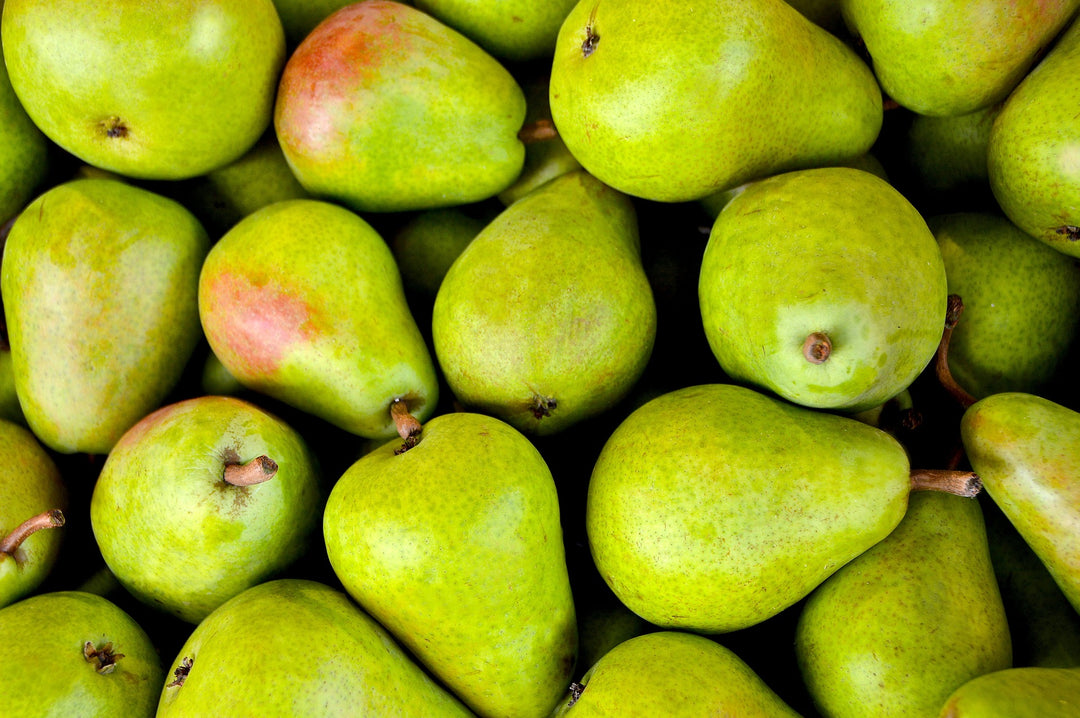What is a Fishmonger?
What is a Fishmonger? Overview:
Fishmongers sell raw fish and seafood to the community, working directly with their local fisherman to provide the very best lobster, salmon, shrimp, clams etc. that they can.

Fresh seafood is game changing, especially when it comes from a local, ethical source. Kelly Probst, the owner of Simple Seafood knows a whole lot about fresh fish and sustainable seafood. You can learn all about his escapades as a fishmonger in the new documentary by Dalstrong, The Fishmonger & The Sea.
Get inspired by his approach to seafood then get out there and become your own village fishmonger. Once you’re hooked, we’ve got you covered on the best knives to buy to fillet and gut all those freshly caught cod, tuna, or whatever else you reeled in.
1. What is a Fishmonger?

Fishmongers are the “eyes and ears” of the ocean. They pick the best selection of local seafood for anyone consuming fish, according to Kelly Probst. Fishmongers sell raw fish and seafood to the community, working directly with their local fisherman to provide the best lobster, salmon, shrimp, clams etc. that they can.
Historically fishmongers worked with fishermen and sold their seafood products in the fish market. These days, fishmongers are becoming replaced by a seafood department in the supermarket.
For more information on why your local fishmonger, and world fishmongers in general, are so important to the restaurant industry and to protecting the seafood industry check out the documentary The Fishmonger & The Sea.
2. The Fishmonger & The Sea - A Dalstrong Film

This is a fantastic documentary about the ways in which the fishing and seafood industry has changed over the years and how one man is impacting the health of our oceans. In the film we follow Kelly Probst, a fishmonger from Florida, who goes around to different clients to sell the best, most sustainable bluefish, squid, crab, or whatever else has been caught fresh daily.
As a former investment banker Kelly went back to school to change the ways in which people interact with the local seafood community. He wanted to create a direct line from the ocean to the people, rather than a confusing road of multiple traffic sources.
In the film we are also introduced to a few different head chefs at local restaurants, like Michael Cooper and Camilo Velasco who value Kelly’s fishmonger service immensely.
A fishmonger according to Velasco is, “your connection to the best possible product than an area can offer.” But as you can see in the film a fishmonger is also the key to maintaining a more sustainable future for our sea life.
Dalstrong created this film to highlight some of the incredible people who are changing the culinary world for the better. At Dalstrong we love rule breakers and those that create impact, so sharing the story of Kelly Probst and the fresh, sustainable ingredients he provides to the world just seemed right.
3. Our Top 5 Knife Picks for Fishmongers
When you’re a chef who works with fish frequently you absolutely need a stellar fillet knife (plus a sturdy apron and whetstone) in your kitchen arsenal. The key to being prepared to shuck an oyster and other shellfish and fillet a perfect salmon at the same time is having a variety of blades. For more information on what to look for in terms of selecting the perfect fish fillet knife check this article out.
The best fillet knives, for me personally, are small, maneuverable and sharp as hell, much like this stellar shucking knife. That means that when you’re looking for the best knives for that fresh catch, Dalstrong has you more than covered.
1. Fillet Knife 6” | Shogun Series
One of my absolute favorite knives, this Japanese high-carbon steel blade is made for a clean slice every single time. You can’t beat this knife in terms of style, balance, and serious precision. Best used to filet a perfect Saturday afternoon fresh catch.
Pros
- The unique narrow blade has a curve that allows you to slice cleanly through skin, tissue, and bone of any fish you throw its way.
- With 67 layers of high-carbon stainless Japanese steel this knife is insanely strong, durable, and stain resistant to boot.
- Of all the knives available for pristine filleting this is by far the most stylish. With its black and silver look, with an inscripted “Tsunami Rose” pattern you’ll look like the coolest fisherman on the dock if you have this on hand.
Cons
- For all my deboning and descaling needs I prefer a smaller blade, but for some they might want an extra half inch or so. In which case I’d recommend the Crusader Series 6.5” Fillet Knife.
- The price point on this particular slicer is a bit higher than others. If you can splurge, this is the one you want. But for those on more of a budget, consider the fantastic Shadow Black Series 6” Fillet Knife instead.
- While I consider this look incredibly handsome, it is more traditional than some of the more modern styled knives available on that market.
2. Fillet Knife 6” | Delta Wolf Series
Become the butcher of the sea and everyone’s favorite host with this absolute weapon of a knife known for filleting any type of food you can imagine. As soon as you’ve caught your daily catch and filleted it you’ll just need some salt (and for those like me, a bit of olive oil) and a bit of fire (like in the documentary!) and you’ll have the recipe for a stellar dinner party at the beach.
Pros
- Of all the fillet knives this has by far the skinniest blade engineered for trimming, de-boning, or butterflying all protein species with precision and speed. It’s shape allows it to glide right through skin and easily around bone.
- It has an onyx-black Titanium Nitride coating that adds extra protection so the knife will last against all sorts of meats without ever wearing down.
- The all black look is both sleek and still traditional in its form, plus its price point is mid-level so this is a much more accessible knife for all budget types.
Cons
- Again, I prefer a 6” blade when I’m really trying to get into the meat and cut around easily, but if you’re looking for a bigger blade the Crusader Series 6.5” Fillet Knife is still the choice.
- While cheaper than the Fillet Knife 6” | Shogun Series this price point is still slightly higher than other fillet knives available.
- This knife has a blade that’s one of a kind and easily maneuverable but also much thinner than traditional fillet knives. If that’s not your style, consider a thicker blade, maybe even a Santoku.
3. Fillet Knife 6” | Shadow Black Series
This geometric, all black fillet knife makes a bold statement in the kitchen. With its exceptional grip and slightly thicker blade it has been engineered to make cutting meat (or fish!) from every single angle as easy as cutting crab cakes.
Pros
- The military-grade G10 handle can withstand heat, cold, and moisture so you won’t have to worry about slicing through a fresh catch in any type of weather condition.
- While its angle is reminiscent of a classic fillet knife, the blade is much thicker than the Delta Wolf 6” and the Shogun Series 6” allowing a bit more of a solid meat grip for those that desire it.
- Its look and style is mean and menacing and sure to impress any and all who see you yielding this sturdy blade.
Cons
- I love the aggressive, wider width of this knife’s blade but if you’re searching for a more delicate blade I’d check some of the other fillet knife options.
- While the look is modern and innovative the blocky geometric shape of this knife may not be everyone’s cup of tea.
- I’ve said it once and I’ll say it again, the 6” life is the life for me. But if you’re used to working with say a massive Nakiri style knife this size may not be your bag.
4. Fillet Knife 6.5” | Crusader Series
From cutting out a fin, to slicing through the sinew of some meat, to getting wild and slicing up some cheese, the versatility of this 6.5” fillet knife is unmatched. It’s all steel, minimalistic look is as fresh as the ocean life it easily fillets.
Pros
- The German ThyssenKrupp x50crmov 15 blade steel is exceptional and exceptionally sharp for the most precise cuts and angles every single time.
- At long last we’ve found a slightly longer blade. Coming in at 6.5” for those of you that need a bit of extra length this is absolutely the knife for you.
- With its all stainless steel it is one of the most balanced, strong, and lowest maintenance of our blades that has been engineered to withstand anything.
Cons
- That extra half inch may be a con for some of you, in which case scroll back up and find yourself the perfect 6” fillet match.
- The ergonomic handle is ideal for comfortability, grip, and maneuverability but because of the design (i.e. the fact that it’s not solid in the middle) it may not be for everyone.
- While the price point is absolutely ideal for this top of the line knife, if you’re in search to spend a bit less I’d consider the Fillet Knife 6” | Shadow Black Series instead.
5. Fillet Knife 6.5” | Valhalla Series
This knife just looks like something that would be found on a god of the sea with its iridescent detailing and sandblasted finish. Descale, debone, and fillet any catch, throw it in a saute of butter, and you can become a god of the kitchen as well.
Pros
- The shape of this impeccable blade is ideal for those that don’t want too thin or too short of a blade. The extra half inch and tapered design allows you to slice and dice as vigorously as you need.
- With 5 layers of stainless steel you can ensure a long lasting blade that is wear resistant, durable, and even stain resistant.
- I think the look of this knife is truly the best thing about it. It looks like a mermaid mixed with Poseidon, with the strength and grace you’d want from any underwater superpower.
Cons
- This knife is an absolute steal, but if you want the 6.5” fillet at a slightly cheaper bargain, go with the Crusader Series.
- Its blade shape I find incredibly alluring but there’s something to be said about a slightly thinner blade for deboning and decaling. In which case, take a look at the slightly smaller Delta Wolf Series fillet knife.
- If this looks a bit too pretty for your kitchen, the classic and timeless look of the Shogun Series fillet knife may be more your style.
Bonus: Boning Knife 8” | Shogun Series
While there are different category headings for those that fillet fish, what’s a true fishmonger without a boning knife? If you want to be a top of the line fishmonger, you’ll need the top of the line gear, like this 8” masterpiece.
Pros
- This knife looks sharp, cuts sharp, and is made with a AUS-10V Japanese steel cutting core at 62+ Rockwell hardness. In other words it’s strong, hard, and made for precision cutting.
- It has 8” to play with and is known for its flexibility, meaning you can slice through just about anything, no matter how big the size or awkward the angle.
- The blade is triple riveted for even further resilience than your average knife, plus it’s non-stick and easy to clean.
Cons
- This is a luxurious knife. Luxury comes with a price. If that price point is a bit too high, there are several other high end options on the lower end.
- I love my boning knives a bit bigger, in case I want to tackle a larger catch. But if you’re more interested in a slightly smaller boning knife the 6” version is also fantastic.
- I love the versatility of this blade, but if you’re looking for a specific boning knife for poultry you might prefer this tiny 3.75” poultry knife.
4. Frequently Asked Questions
Why is a fishmonger called a fishmonger?A fishmonger is called a fishmonger because of its Latin root word “mongo” meaning dealer or trader. In other words, fishmongers are fish dealers.
What is the difference between a fisherman and fishmonger?While they can be interchangeable in that fishmongers can also fish and fisherman can also sell their fish, fishmongers tend to buy directly from the fisherman and then sell to others. You could say one is the production side (the fisherman) and the other is in sales (the fishmonger).
How do I become a fishmonger?While there is not one set path to becoming a fishmonger it would be helpful to have taken some sort of course of study that teaches you about marine biology and the ways in which the oceans work. There are certifications in place that you can take, or apprenticeships, but knowing how to fish and what to look for is a great place to start. I’d also say that having a passion for the ocean, its life forms, and the sustainability of it is another asset to becoming an ethical fishmonger.
Is fish monger a derogatory term?
A fish shop is a general term for a store that sells fish and seafood. A fishmonger refers specifically to an individual or establishment that sells fish and seafood, often specializing in various types of fish, shellfish, and related products. While both terms can be used interchangeably to some extent, "fishmonger" emphasizes a more specialized and traditional focus on the fish trade.
What is the work of fish fishmonger?
A fishmonger is responsible for selling fish and seafood products. Their work involves sourcing, cleaning, preparing, and displaying various types of fish and shellfish for customers. They often have expertise in identifying fresh products, filleting, and providing cooking advice. Additionally, fishmongers maintain a clean and sanitary environment in their shop while offering quality customer service and knowledge about seafood.
Is it a fish shop or fishmonger?
"Fish shop" is a general term referring to a store that sells fish and seafood. "Fishmonger" specifically refers to an individual or business that sells fish and seafood, often with a specialization in the trade. While both terms can be used, "fishmonger" emphasizes a more dedicated and knowledgeable approach to selling fish and seafood products.
What is the meaning of fishmonger?
A fishmonger refers to an individual or business that sells fish and seafood. In North Texas, "Fishmongers Seafood" is a popular establishment offering a variety of fresh seafood products. The term is commonly associated with markets and events, like the State Fair of Texas, where fishmongers showcase and sell a range of fish and seafood items to consumers.
Shop Dalstrong Fillet Knives Today
You can also check in with our Expert Knife Finder Quiz and get specific recommendations based on your needs.
Written by Monique NicholasBased in Vancouver, Monique enjoys jumping into bodies of water, sending postcards, and adding lemon to every single one of her dishes.
































































































































































































































